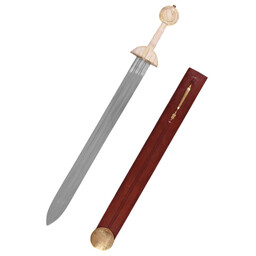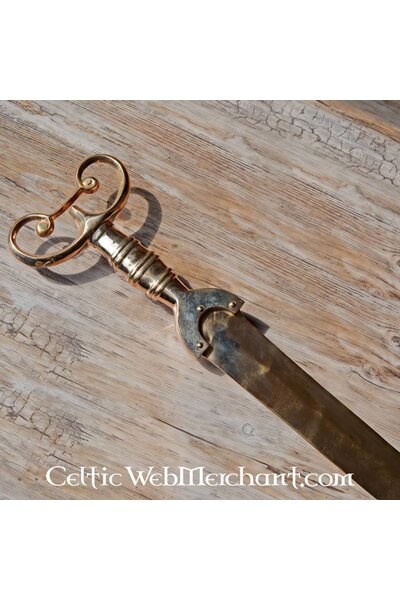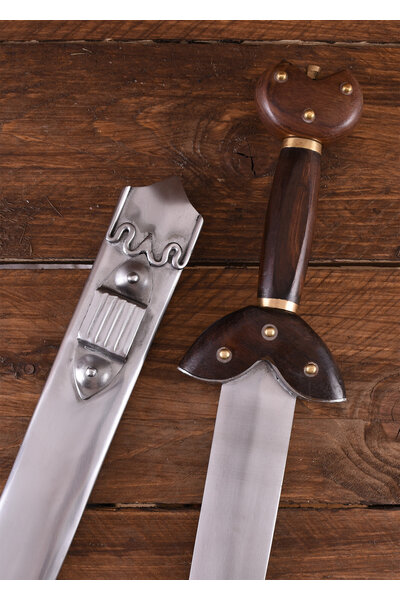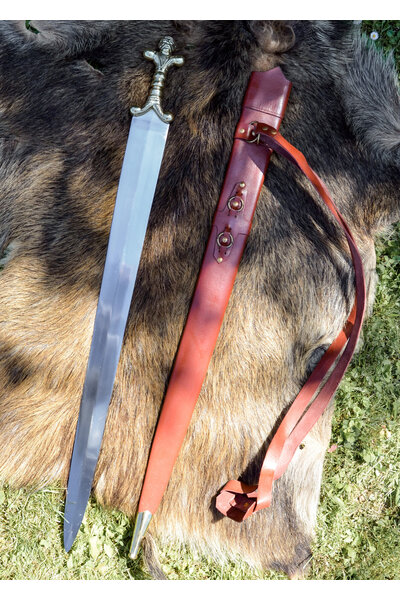Product description
This spatha is a replica of an original from the 3th century AD. Nowadays it`s part of the collection of the Rheinisches Landesmuseum in Bonn. This sword was probably used by a Germanic auxiliae in service of the Roman legions.
The sword is 85 cm long, with a blade of 63 cm long and 5,3 cm wide. The hilt is made of bone. This sword comes with a wooden scabbard covered with red leather and decorated with brass ornaments in the style of the Late-Roman period. The scabbard is made after several pieces found in Dura Europos and the Rhineland. Weight 1,9 kg.
Product details:
Length: 85 cm;
Blade length: 63 cm;
Grip length: 22 cm;
Blade width at guard: 5.3 cm;
Weight: 1900 g;
Steel type: EN45 spring steel, hardness 48 HRC;
Edge: Semi-sharp;
Tang construction: Full tang construction;
Pommel: Screwed;
Grip wrapping: Bone;
Based on a historic original: Yes;
Transport weight (in gram): 3000 *
This item is produced in limited quantities only. This means that every piece is unique. Sizes & finish may vary lightly from piece to piece.
We do not sell this product to customers under the age of 18. Click here for more information on the European arms acts.
Tip: How to adjust the finish of your armour and weaponry
Luxurious (polished)- polish the steel with metal polish or toothpaste. You can even give the item a mirror-like polish. Test on a small surface first!
Handmade (matte)- soak the steel in cola for 40 minutes to 20 hours. Check regularly and treat with black sandpaper.
Antique (patinated) leave the steel to rust for some time in a damp environment, preferably outside. Remove the red layer of rust, to reveal the corroded top layer.
Please note. After finishing the product yourself, the warranty and return right expire. Celtic WebMerchant is not responsible for the obtained result.
Packaged with 100% recycled material
When packaging this item, we exclusively use 100% recycled plastic and recycled paper/cardboard from FSC certified forests. We reuse a large part of the material directly without the intervention of a recycling process.
Recycle the material by separating your waste:
1. Cardboard: separate or reuse your paper.
2. Plastic cushions, clothing bags and plastic tape: separate or reuse your plastic. If possible, pierce the cushions with a volume reduction needle.
3. Paper packaging for jewelry and small items: these have a plastic inner layer. Remove these, then separate your paper and plastic.











